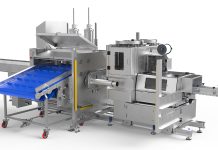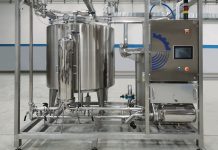New intelligent technologies and their integration within packaging systems. Intelligent packaging materials can monitor the conditions of packaged products or of the surrounding environment. A recent study conducted by a group of Italian researchers (Ghaani et al., 2016), describes recent developments achieved in this field over the last years. This technology is based on the use of labels, tags, inks or other similar tools that are able to provide different functions. In particular, these systems divide into three main categories: (I) indicators, primarily supplying information on product quality to consumers; (ii) data carriers, as barcodes or RFID systems, specifically developed for storage, distribution and traceability purposes; and (iii) sensors, for a rapid and accurate control of specific analytes present in the product. In spite of the potential advantages of these systems, as described in a variety of scientific documents, their commercial applications remain rather limited. According to the authors, this is partly due to their costs that a re still relatively high in many cases (they can make up 50-100% of total packaging costs). The research points out the need for additional technological improvements. To date, in fact, the efficiency of many of these tools significantly decreases, when switching from tests on model systems to tests on real foodstuff. Another issue that has to be developed consists in the integration of several functions in a single system as, for instance, the capacity of communicating the presence of allergens, as well as the possible microbial contamination. At the same time consumers must be informed about the advantages of this emerging technology. Finally, further efforts are needed to use this sustainable technology even from the environmental point of view, as for instance through the use of reusable (hence reversible and long-term) systems.
Electronic identification technology for agriculture. Consumers’ request for information on origin and quality of agri-food products is steadily rising. This demand concerns also production process and distribution chain. Electronic identification tools, such as radio frequency identification devices (RFID) or Quick Response Codes (QR code ) may represent a particularly suitable tool to meet this need. A recent study, conducted by an Italian researcher (Luvisi, 2016), investigates the improvements achieved by implementing these tools in the agri-food sector. The author points out that in the period 2005-2009, there has been a tenfold increase of literature on the application of radio frequency identification in agriculture compared to the previous period 2000-2004. Furthermore, the widespread diffusion of electronic tools such as QR codes is associated with a rapid increase in automation in the entire agri-food sector. The association of thermal sensors to electronic identification systems provides for improved temperature control along the supply chain. Whereas tests with biosensors used for biological or chemical alerts are limited and require additional investigation. The use of RFID tags in agriculture improves plant health management as well as environmental monitoring. Finally, even though phytosanitary certifications are mandatory in high-cost cultivation systems and may promote the use of RFID tools, the high costs involved and the lack of specific economic analysis may be an obstacle to their wide spreading.
References
Ghaani et al., Trends in Food Science & Technology, 51, 2016, 1-11
Luvisi, Agronomy for Sustainable Development, 36, 2016, Article: 13




